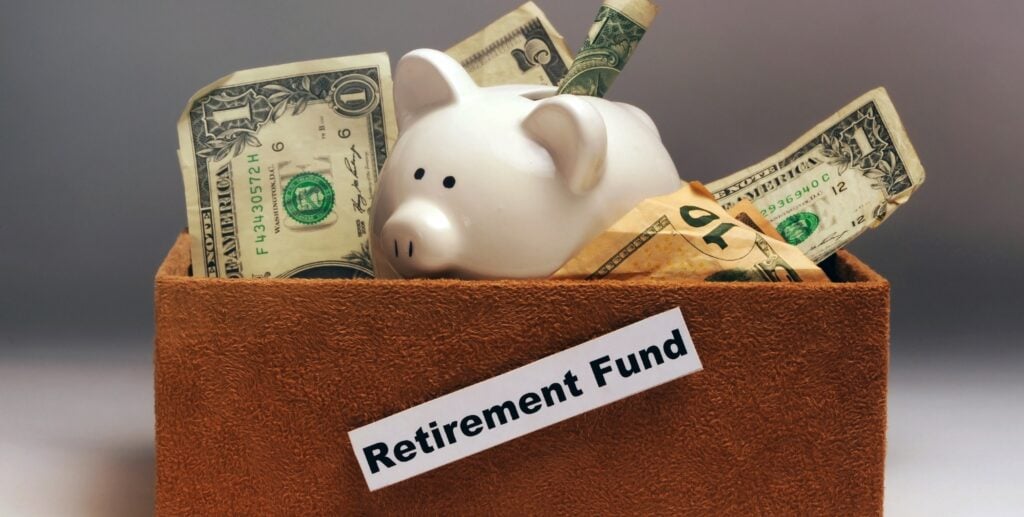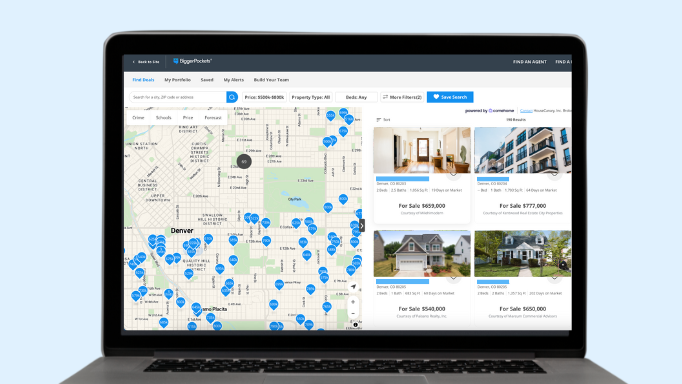
“I saved up a million dollars—and all I got was this lousy $40,000 a year.”
That’s the metaphorical T-shirt that the average retiree wears.
Actually, it’s worse than that. The average retiree aged between 65 and 74 doesn’t have a million dollars saved as a nest egg. They have $609,230, and that’s the mean average, not the median. You can be sure the median is a lot lower.
Based on the traditional 4% rule, the average retiree takes an annual income of just $24,369 from that nest egg. Don’t blow the party kazoos all at once.
All this means that the traditional retirement model just doesn’t work well. To put it bluntly, the math sucks.
I can do better—and so can you.
The Root of Paper Assets’ Problem: Volatility
Over the long term, stocks perform pretty well as an asset class. The S&P 500 has averaged around a 10% annual return over the last century.
But “average” doesn’t mean “stable,” “dependable,” or “predictable.” In some years (and decades), it’s performed atrociously, losing massive amounts of money.
When Bill Bengen first developed the 4% rule back in the 1990s, he did it by looking back at stock and bond returns over every 30-year period in modern history. He honed in on the worst 30-year stretches over that time and calculated how much retirees could have withdrawn in the first year of retirement without draining their nest egg over those bad 30-year stretches. (There was more to it than that, but you don’t want to read a treatise on economic theory.)
The bottom line: He determined that 4% is a safe withdrawal rate based on worst-case scenarios. Retirees who withdraw 4% of their nest egg in the first year of retirement and adjust upward by the inflation amount each year thereafter have almost no risk of running out of money over a 30-year retirement (assuming historical returns continue playing out).
The Result for Most Retirees: Oversaving
Think about that: Retirees earn an average of 10% each year on their stocks but only withdraw 4%.
To avoid any risk of running out of money, retirees plan for the absolute worst-case scenario. This means most of them die with far more money than they actually need.
I don’t want to hustle and scrimp to save up a million dollars just to earn a measly $40,000 on it. I’m guessing you don’t either.
How Real Estate Can Help
In our real estate investment club at SparkRental, we meet and review different passive investments every month. We aim to earn 10% to 12% interest on real estate debt investments and 15%+ annual returns on our equity investments.
We collect the interest in real-time every month. The returns on real estate equity investments are a combination of income (distributions) and eventual profits upon sale.
“Yeah, but what about the risk on those investments? Don’t high returns come with high risk?”
Not necessarily. In fact, there’s a term in finance for investments with high returns and low risk: asymmetric returns. Experienced real estate investors know what I’m talking about.
Ask someone who has flipped 300 homes about the risk in their flipping returns. Actually, I did. The operator responded, “Our win rate for flips is between 93%-95%. Occasionally, one misses because you can’t foresee every problem. But when you do 70-90 flips a year like we do, the profit averages are inevitable.”
Our Co-Investing Club invested with that operator for a note paying 10% interest. The note is backed by a personal guarantee from a multimillionaire, a corporate guarantee from his company that owns over $15 million in real estate, and a first-position lien under 50% LTV.
Does that sound like a high-risk investment?
A retiree could live on that 10% income (as part of a diverse portfolio, of course). And that changes the math for retirement. Instead of saving up $1 million to generate $40,000 in income, you’d only need to save $400,000.
Avoiding Sequence of Returns Risk
The greatest risk from stocks comes from a market crash right after you retire. If a crash occurs too early in your retirement, you end up selling off too many stocks while prices are low, and then there’s not enough left to recover your portfolio even after stocks start climbing again.
Finance nerds call this “sequence of returns risk:” The timing of crashes matters just as much as your long-term average returns.
You can avoid it by simply not selling off stocks if a crash happens early in your retirement. That means you need enough to live on from other sources for the first few years of retirement in the event of a bear market.
My Approach: Real Estate for Now, Stocks for Late Life and Legacy
You get it: Stocks make for great long-term investments, but you can’t predict what they’ll do in any given year. I can tell you with near certainty that my stock investments will have done great in 30 years from now, but I couldn’t tell you how they’ll do over the next three years.
I’ll feel comfortable selling off stocks later in my life to cover my living expenses. And they’ll make a straightforward inheritance for my daughter when I kick the bucket. But I also want to build predictable passive income and wealth in the short- and medium term.
Our Co-Investing Club invests in a mix of private partnerships, notes, debt funds, equity funds, and real estate syndications. Some pay strong income right away, such as the note outlined. We just invested in a land-flipping fund that pays 16% annualized income.
Most of the syndications pay solid distributions each quarter, with a cash-on-cash return between 4%-8%. Some will sell to cash out our profits over the next few years; others will refinance to return our initial capital while continuing to pay us distributions. A few growth-oriented investments don’t pay distributions for the first year or two.
The end result: I don’t worry about “safe withdrawal rates” or the 4% rule. I earn higher returns than that now, in real-time.
And by “now,” that includes the not-so-strong market we’re living in at this moment. The last two years have been a bear for many real estate investors—and we’re still doing well. Imagine how you can do in a decent market.
The Trick: Avoiding Downside Risk
When we look at investments together as a club, we hone in on downside risk.
There’s no shortage of real estate investments promising 15%+ returns. But some of them come with high risk, and others with low or moderate risk.
If you want to build a portfolio that you can live on, seek out that extra downside risk protection. From there, your retirement planning opens up in a way that people following the 4% rule can only envy.
Find the Hottest Deals of 2024!
Uncover prime deals in today’s market with the brand new Deal Finder created just for investors like you! Snag great deals FAST with custom buy boxes, comprehensive property insights, and property projections.

Note By BiggerPockets: These are opinions written by the author and do not necessarily represent the opinions of BiggerPockets.





